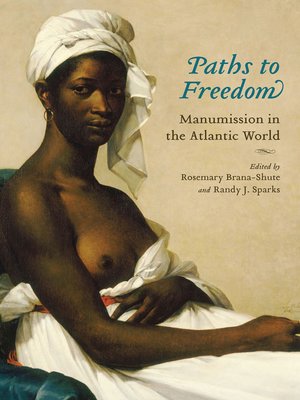Paths to Freedom
ebook ∣ Manumission in the Atlantic World · Carolina Lowcountry and the Atlantic World
By Rosemary Brana-Shute

Sign up to save your library
With an OverDrive account, you can save your favorite libraries for at-a-glance information about availability. Find out more about OverDrive accounts.
Find this title in Libby, the library reading app by OverDrive.



Search for a digital library with this title
Title found at these libraries:
| Library Name | Distance |
|---|---|
| Loading... |
An international comparative study of a mode of emancipation that worked to reinforce the institution of slavery
Manumission—the act of freeing a slave while the institution of slavery continues—has received relatively little scholarly attention as compared to other aspects of slavery and emancipation. To address this gap, editors Rosemary Brana-Shute and Randy J. Sparks present a volume of essays that comprise the first-ever comparative study of manumission as it affected slave systems on both sides of the Atlantic.
In this landmark volume, an international group of scholars consider the history and implications of manumission from the medieval period to the late nineteenth century as the phenomenon manifested itself in the Old World and the New. The contributors demonstrate that although the means of manumission varied greatly across the Atlantic world, in every instance the act served to reinforce the sovereign power structures inherent in the institution of slavery. In some societies only a master had the authority to manumit slaves, while in others the state might grant freedom or it might be purchased. Regardless of the source of manumission, the result was viewed by its society as a benevolent act intended to bind the freed slave to his or her former master through gratitude if no longer through direct ownership. The possibility of manumission worked to inspire faithful servitude among slaves while simultaneously solidifying the legitimacy of their ownership.
The essayists compare the legacy of manumission in medieval Europe; the Jewish communities of Levant, Europe, and the New World; the Dutch, French, and British colonies; and the antebellum United States, while exploring wider patterns that extended beyond a single location or era. They also document the fates of manumitted slaves, some of whom were accepted into freed segments of their societies; while others were expected to vacate their former communities entirely. The contributors investigate the cultural consequences of manumission as well as the changing economic conditions that limited the practice by the eighteenth century to understand better the social implications of this multifaceted aspect of the system of slavery.







